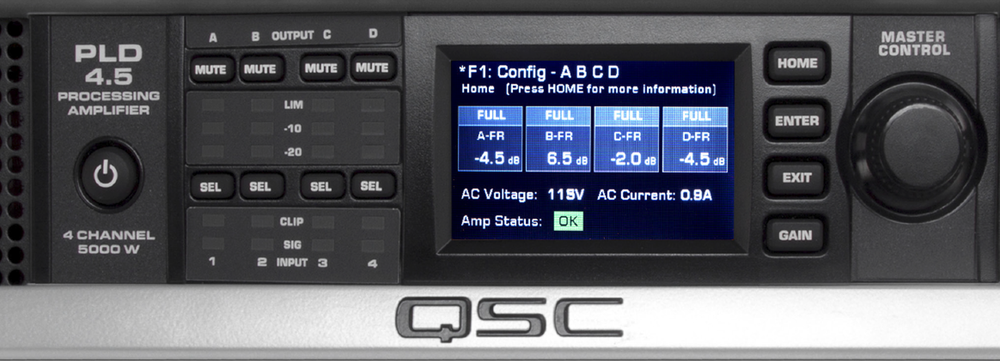Every so often, a new technology comes along that causes you to reconsider the concepts you knew and change the way you specify or design systems. A few years ago, QSC introduced a new amplifier platform of four-channel DSP power amplifiers featuring Flexible Amplifier Summing Technology™ (FAST). Today this technology can be found in PLD, CXD, CX-Q as well as DPA and DPA-Q Series.
This ground breaking FAST (Flexible-Amplifier-Summing-Technology) allows QSC amplifiers to operate more efficiently across a wider range of loudspeaker loads than what is traditionally possible. By incorporating novel Class-D control circuitry, the user can combine multiple amplifier output channels to improve power transfer into virtually any load.
Unlike traditional amplifiers which are designed to deliver the highest efficiency (and power) at a single load impedance (e.g. 4 ohms, or 8 ohms), QSC’s amplifiers with FAST allow the user to select an output stage configuration that best matches the requirements of their specific load. By allowing the user the flexibility to combine amplifier output channels in various bridged, parallel, and bridge/parallel modes, the amplifier can be optimized for high voltage or high current delivery. For example, bridging two channels will give you greater voltage swing optimized for higher impedances (8-16 ohms). Paralleling two channels will give you greater power optimized for lower impedances (2-4 ohms). And that’s not all, QSC’s FAST amplifiers also offer the ability to combine three (or even four) channels into parallel mode to achieve ridiculously high current at low impedances (1-2 ohms). Then, you could also bridge-parallel all four channels to achieve 8000 watts of dynamic power optimized for a 4-8 ohm load.
Hope you got interested? If you want to learn more about FAST, check out also the following article.

Christophe Anet
Latest posts by Christophe Anet (see all)
- History, Development and Applications of Column Loudspeakers - May 30, 2025
- Why is Dynamic Range so important? - May 30, 2023
- Differences between Flown and Floor-Mounted Subwoofer Deployments - May 2, 2023

Remarkable achievement by QSC. In the past one of favorite amplifier was QSC 2000 and QSC 3000